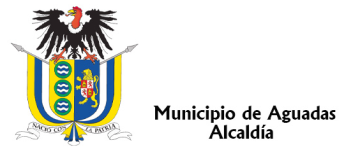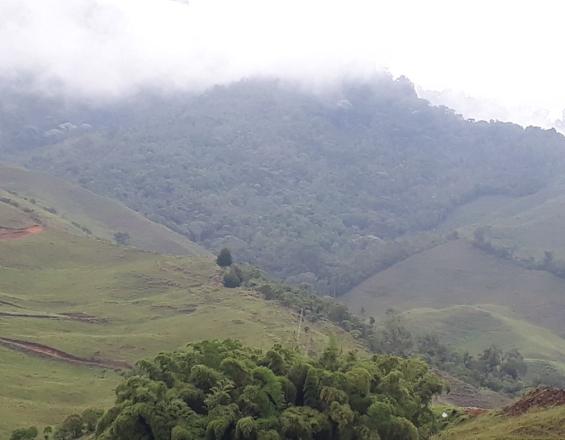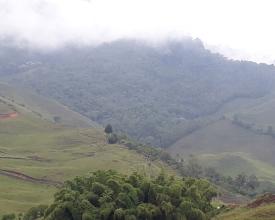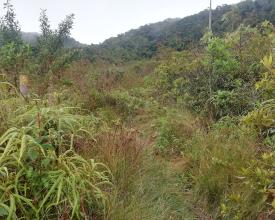
Conservation of the San Pablo micro-watershed: a success story of shared governance between municipality and local population

The San Pablo micro-watershed, as a forest protecting water sources, is a strategic zone for the municipality, which has had to find the necessary means for its protection due to a new production scenario: Avocado cultivation and its environmental consequences , such as water contamination from pesticides and fertilizers, the reduction of vegetation and forests, and the consequent loss of ecological connectivity with other micro-watersheds.
Among the main conservation actions implemented are the isolation of water recharge sites to control damage from livestock entry, reforestation with native species, and the signing of agreements between avocado growers and government institutions at all levels to reduce pressure on water resources.
Context
Challenges addressed
Among the challenges faced in this conservation initiative we can mention:
- Presence of an imminent shift in land use towards extensive and uncontrolled avocado planting.
- Great pressure on water resources.
- Socio-environmental conflicts between locals and avocado producers.
- Deforestation of the forest and native vegetation.
- Loss of connectivity between the various micro-watersheds.
- A notable displacement of the local population due to the convenient sales of their farms, derived from the increase in the price of their land, now destined for the new avocado crop.
Location
Process
Summary of the process
In this solution, a law imposes on departments, municipalities, irrigation district construction and operation projects, the obligation to allocate a percentage of not less than 1% of their current income to the acquisition, maintenance and preservation of water recharge lands as well as to finance payment for environmental services schemes, thus complementing,In a harmonious and effective manner, the actions of the different government and civil society actors, who have contributed other sources of resources such as inter-administrative agreements, solidarity agreements with the Community Action Boards and collaboration agreements for the Integral Management of Micro Watersheds Supplying Aqueducts and Areas of Environmental Interest, between the environmental governing bodies and the municipalities, have been complemented in a harmonious and effective manner.
Building Blocks
Financial sustainability based on budgetary allocations of local and regional authorities
Allocation of a percentage of departmental and municipal budgets to water conservation.
Enabling factors
National law that declares of public interest the areas of strategic importance for the conservation of water resources that supply water to municipal and district aqueducts, for which the departments and municipalities must allocate a percentage of no less than 1% of their income for the acquisition and maintenance of such areas or to finance payment schemes for environmental services.
Lesson learned
A complement between political will and regulatory framework is necessary for financing to be consolidated into concrete actions.
Agreements to reinforce the actions of local and regional authorities
In addition to the resources that the territorial entities in Colombia must, by law, allocate to the conservation of water resources, different government and civil society actors have also become contributors of other sources of resources for this purpose through inter-administrative agreements that provide support both in technical and economic resources for the sustainability of the project in the areas, solidarity agreements with Community Action Boards, or collaboration agreements for the Integrated Management of Micro Watersheds.technical and economic resources for the sustainability of the project in the areas, the solidarity agreements with the Community Action Boards or the collaboration agreements for the Integral Management in Micro Watersheds Supplying Aqueducts and Areas of Environmental Interest, in addition to the environmental governing bodies and the municipalities.
Enabling factors
Government and civil society actors united and committed to the conservation of the micro-watershed.
Lesson learned
It is necessary that there be an axis of articulation for the different conservation efforts among the intervening actors.
Impacts
Through agreements signed between the Mayor's Office of Aguadas and the Community Action Boards, progress has been made in the following areas:
- Isolation of water recharge sites, through the establishment of perimeter fences.
- Planting of wood energy plots.
- Construction of eco-efficient stoves.
- Reforestation with native species in order to expand forest coverage.
- Environmental education oriented to good agricultural and livestock practices, tending to raise awareness about the importance of the protective forest.
- Limitation of the avocado crop expansion frontier in terms of conservation zones.
- Sustainability and adequate duration of the agreements reached for the conservation of areas of environmental interest.
- Creation of monitoring and conflict resolution mechanisms.
Beneficiaries
More than 300 families from the micro-watershed, as well as public and private actors who have contributed to the preservation of the area and its resources, in their role as potential replicators of this solution in other regions with similar situations.
Sustainable Development Goals
Story

The San Pablo micro-watershed has suffered anthropogenic pressures for several years due to agricultural expansion, especially avocado cultivation. This has been a problem for the local populations considering that the area is the main source of water supply for human and animal consumption and agricultural activities. Through administrative agreements between the Corporación Autónoma Regional de Caldas and the municipal government, resources were obtained to protect these areas. This consisted of delimitation, assisted natural regeneration, increase of the protection zones and inclusion of those that were not affected by the expansion. Through solidarity agreements with the Municipality, the communities ratify their commitment to the conservation of the micro-watershed by being an active part of its protection.
Note: The systematization of this case was carried out by the International Union for Conservation of Nature (IUCN). The case was highlighted in a survey to identify Complementary Conservation Strategies (CCS) in Colombia, conducted by ICLEI South America in 2018. For more information:
http://sams.iclei.org/es/que-hacemos/proyectos-en-ejecucion/areas-protegidas-locales/colombia.html
The IUCN and ICLEI actions were within the scope of the regional project Protected areas and other area-based conservation measures at the local government level , and were financially supported by the Deutsche Gesellschaft für Internationale Zusammenarbeit (GIZ) GmbH. The regional project is implemented by the Ministries of Environment of Brazil, Colombia, Ecuador and Peru, and GIZ, in cooperation with ICLEI and IUCN. The regional project is supported by the German Federal Ministry for the Environment, Nature Conservation and Nuclear Safety (BMU) within the scope of the International Climate Initiative (IKI).






